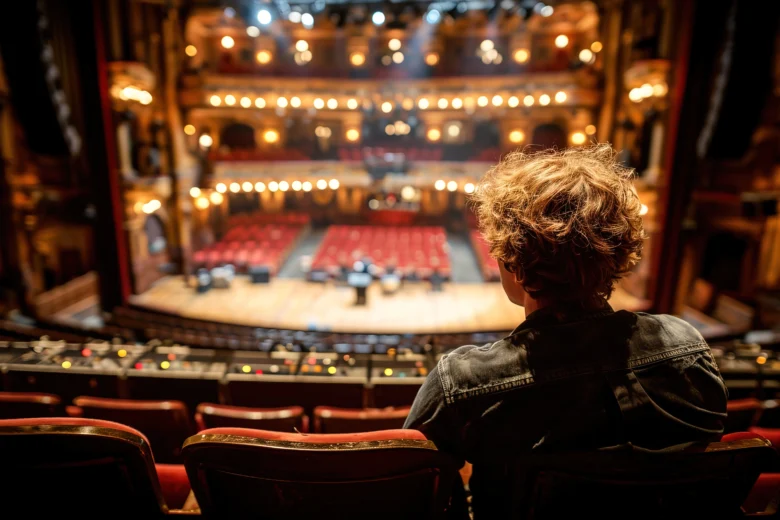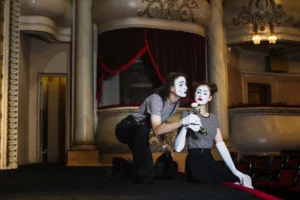Musical Cinema: Classic and Modern Musicals – Few cinematic genres have aged as gracefully as the musical. Classic musicals, particularly those from Hollywood’s Golden Age, continue to shape cultural narratives and inspire modern filmmakers. These iconic productions weren’t just about catchy tunes — they reflected the hopes, dreams, and challenges of their time.
Golden Age Icons and Cultural Relevance
From the 1930s to the 1950s, studios like MGM and Warner Bros. dominated the screen with lavish musicals. Films like Singin’ in the Rain (1952) and An American in Paris (1951), both starring Gene Kelly, captured the essence of post-war optimism. Their choreography, bright color palettes, and rich orchestrations set a new standard in storytelling.
These musicals weren’t escapist fantasies alone — they offered reflections of American identity. For example, West Side Story (1961), directed by Robert Wise and choreographed by Jerome Robbins, used song and dance to confront racial tension and urban conflict. It wasn’t just a love story — it was a political statement set to music.
Broadway to Hollywood: The Great Migration
Many classic musicals were adaptations of Broadway hits. This theatrical foundation brought a distinct rhythm to Hollywood cinema. Productions like Oklahoma! (1955) and The Sound of Music (1965) maintained the emotional intensity of live performance, even on screen. The latter, starring Julie Andrews, became one of the highest-grossing films of all time and remains a staple in popular culture.
What makes a musical stand the test of time? Is it the melody, the story, or how they make us feel decades later?
Classic musicals endure because they combine artistry with emotional resonance — and in doing so, they remain timeless.
Evolving Soundscapes: The Rise of Modern Musicals
Reinventing the Genre for Contemporary Audiences
Modern musicals have shifted the genre’s identity — no longer confined to cheerful tap numbers and idyllic romances, they now explore deeper, more personal, and often darker themes. Starting in the late 20th century and accelerating in the 21st, musicals embraced innovation and diversity, both in style and subject matter.
The 21st-Century Renaissance
Musicals like Moulin Rouge! (2001) and Chicago (2002) reintroduced the genre to mainstream cinema with visual spectacle and emotional intensity. Baz Luhrmann’s Moulin Rouge! fused pop music with baroque visuals, while Chicago revived the jazz-age crime narrative with sleek choreography and editing. The latter won six Academy Awards, proving that musicals could be critically and commercially successful again.
In 2016, La La Land became a cultural phenomenon. Directed by Damien Chazelle, it paid homage to classic Hollywood while presenting a bittersweet narrative of ambition and love. Its opening number, “Another Day of Sun,” set the tone: energetic, modern, yet nostalgic. The film sparked renewed global interest in musicals, especially among younger audiences.
Hamilton and the Influence of Lin-Manuel Miranda
No modern discussion is complete without mentioning Lin-Manuel Miranda’s Hamilton, which blurred the line between cinema and theater when released on Disney+ in 2020. Though a filmed stage production, its impact was cinematic. With rap, hip-hop, and R&B replacing traditional show tunes, Hamilton redefined musical storytelling for a new generation.
How did musicals evolve from fairy-tale endings to raw realism and complex characters?
Modern musicals reflect the nuances of contemporary life — they’re bold, inclusive, and unafraid to challenge conventions, while still retaining the heart that defines the genre.
Musical Cinema and Social Commentary
When Songs Speak Louder Than Words
One of the most fascinating aspects of musical cinema is its unique power to address social and political issues through emotion and melody. Far from being light-hearted diversions, many musicals have tackled inequality, identity, war, and revolution — often more effectively than traditional dramas.
Musicals as Mirrors of Society
Cabaret (1972), directed by Bob Fosse, is a brilliant example of political storytelling in musical form. Set in 1930s Berlin during the rise of the Nazi regime, the film juxtaposes glamorous cabaret performances with the terrifying political climate outside. Liza Minnelli’s performance, both dazzling and tragic, makes a lasting statement about the dangers of apathy and denial.
More recently, The Greatest Showman (2017) used spectacle and song to explore themes of diversity and acceptance. Though criticized for historical inaccuracies, the film’s anthem “This Is Me” became a global hit and was embraced as a message of empowerment for marginalized communities.
Representation and Inclusion
Contemporary musicals have become more inclusive, portraying voices that were historically underrepresented. Films like Rent (2005), based on Jonathan Larson’s Broadway hit, center around LGBTQ+ characters, poverty, and the HIV/AIDS epidemic — using rock music and raw emotion to drive their narratives.
Likewise, In the Heights (2021), also by Lin-Manuel Miranda, celebrated Latinx culture with joy and pride, emphasizing the importance of community and identity. It brought Spanglish lyrics, salsa rhythms, and real-life immigrant struggles into the mainstream.
Can musicals make us more empathetic? Can they provoke change?
They can — and often do. By transforming complex issues into emotionally accessible performances, musicals allow us to see the world through another lens. In singing their stories, characters invite us to listen with more than just our ears.
The Enduring Legacy and Future of Musicals
A Genre That Keeps Reinventing Itself
Musicals have always thrived on reinvention. From the elegance of My Fair Lady to the edginess of Tick, Tick… Boom! (2021), each era reshapes the genre according to its voice. And as long as stories can be told through rhythm and harmony, musical cinema will continue to evolve — both as art and cultural commentary.
Streaming and the Digital Age
The rise of streaming platforms has opened a new frontier for musicals. Netflix, Disney+, and Amazon Prime are now actively producing or acquiring musical films and stage recordings. This accessibility has sparked a renaissance in global interest, allowing audiences worldwide to experience stories that were once limited to Broadway or West End stages.
Original productions like Eurovision Song Contest: The Story of Fire Saga (2020) and Roald Dahl’s Matilda the Musical (2022) prove that there’s still plenty of room for playfulness and innovation in the genre. Even animation has embraced the musical format, with films like Encanto (2021) using song to drive plot and deepen character arcs — and winning Academy Awards in the process.
What’s Next?
As technology evolves and audience tastes diversify, the future of musicals looks rich and unpredictable. Virtual productions, interactive storytelling, and AI-generated compositions are already on the horizon. Still, at its core, the genre will likely remain what it has always been: a vibrant fusion of sound, story, and soul.
What keeps us returning to musicals, decade after decade?
Maybe it’s their ability to turn life’s most intense emotions into something we can sing along with. In a world full of noise, musicals offer harmony — and that’s something people will always crave.


